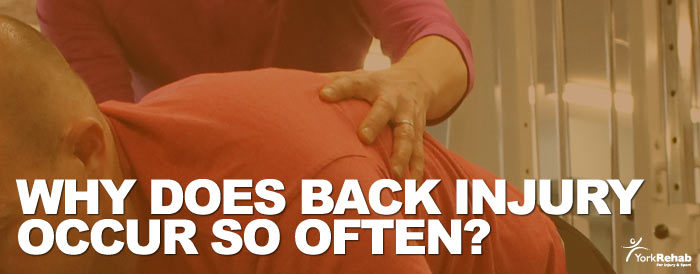
Why Does Back Injury Occur So Often


The vast majority of back injuries are accumulative in nature. What that means is that, on average, it takes 35 to 55 years of living before you accumulate enough wear and tear on the structures of the back that they begin to cause pain. The onset of pain can be quite variable. Often a person may notice only a bit of stiffness after prolonged sitting or bending, or mild discomfort after physical exertion such as snow shoveling. This can go on for years before anything more dramatic occurs. For others, the onset can be sudden and intense after a seemingly innocuous event such as sneezing or a bout of coughing.
Of course, back pain can also occur as the result of an injury where enough force is involved that the back structures sustain an acute injury. For example, a hyper-extension injury in soccer, falling off a horse or a car accident. In these circumstances, the back will progress through a healing cycle and repair the tissue. Depending on the severity of the injury, as with any structures of the body, you may be left with a “weak link” as the repair may not be perfect (eg. Ligaments maybe more lax post-injury which can affect the mechanics of the spine).
Obviously, these “weak links” will be more vulnerable to the usual stresses we place on the spine such as poor posture, inactive lifestyles etc. As a result, it is often noted that the pain from the original injury at some point did actually resolve but returned months or years later. This leads people to believe that the original injury never healed when in fact postural habits and time are catching up with them and “weak links” are going to feel the effects first.
With any injury it is helpful to receive some education on the healing process early on and instruction on what you can do to promote tissue repair to get the best outcome possible. Early intervention is the key.
Comments are closed.

